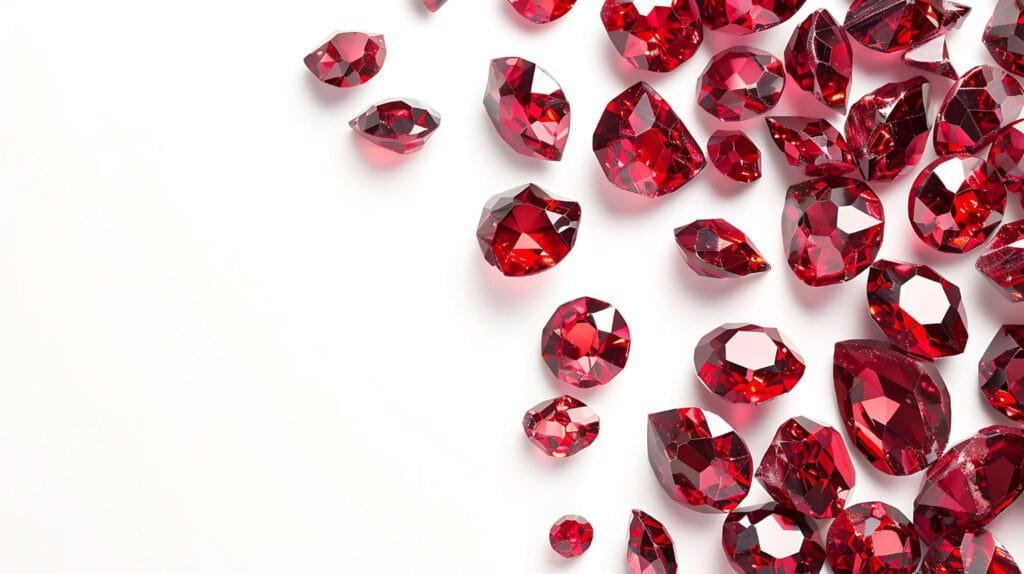From royal crowns to modern fine jewelry, the ruby has long been admired for its intense red hue and captivating brilliance. But what exactly makes this gemstone one of the most valuable in the world? At Serenity Stones, we celebrate not just the beauty of gemstones, but also their powerful symbolism and enduring legacy. In this blog, we explore the history, rarity, and key factors that define ruby’s worth, and introduce a standout piece from our collection that reflects the magic of this gem.
A Gem Steeped in Royal History
Rubies have captivated civilizations for thousands of years. In ancient India, rubies were referred to as the “King of Precious Stones,” believed to protect warriors in battle and bring peace among enemies. Monarchs in Burma (now Myanmar) even embedded rubies in their armor for invincibility. In European lore, rubies symbolized wealth and power, frequently appearing in crowns and regalia.
This historic reverence continues today, with rubies maintaining their position among the elite “big four” gemstones alongside diamonds, sapphires, and emeralds.
What Gives Ruby Its Signature Glow?
A ruby’s mesmerizing red glow is more than just a surface-level beauty, it’s a result of unique geological conditions, trace elements, and expert craftsmanship. The signature red color of ruby comes from the presence of chromium, a chemical element that reacts with the gem’s crystalline structure to produce that fiery brilliance. The higher the chromium content (and the lower the iron), the more vivid and intense the red hue becomes. The most desirable shade called “pigeon blood red” is a deep, velvety red with subtle hints of blue, often considered the pinnacle of ruby quality.
But color alone isn’t the only factor that influences the value and allure of a ruby. Below are the four critical factors known in the gem world as the 4 Cs, that determine a ruby’s quality and worth:
1. Color
Color is the most important value factor for rubies. The finest stones display a vivid, rich red hue—not too dark, not too light. Rubies with overly dark tones may appear almost brown or black, while those too light begin to resemble pink sapphires (which, interestingly, are chemically similar).
Inclusions of orange, purple, or brown can detract from the purity of the red and lower the stone’s appeal. The most valuable rubies display:
Strong internal glow, even under low light
Even saturation
Minimal color zoning
2. Clarity
2. Clarity: Embracing Natural Beauty
Unlike diamonds, rubies are rarely found in flawless condition. Inclusions, tiny mineral deposits or fractures are common, and in many cases, expected. These internal characteristics are like fingerprints of nature, marking the ruby’s natural formation process.
That said, the fewer and less visible the inclusions, the more valuable the ruby becomes. Ideal stones will have:
- No large surface-reaching fractures
- Good transparency
- Minimal cloudiness or milky zones
Interestingly, some inclusions like silk (rutile needles) can actually enhance the stone’s glow through a softening effect known as “silkiness,” which disperses light evenly throughout the gem.
3. Cut
While ruby is a tough and durable stone (second only to diamond in hardness), it’s also notoriously difficult to cut due to its crystal habit and internal inclusions. A skilled gem cutter must work carefully to balance size retention with optimal brilliance.
A well-cut ruby will:
- Maximize internal light reflection, giving it that unmistakable glow
- Present a symmetrical, proportional shape
- Hide inclusions as effectively as possible
- Often be cut into ovals, cushions, or antique-style cuts to retain carat weight and emphasize the color
Unlike diamonds, rubies are cut more for color optimization than for standardized brilliance. This is why no two rubies are ever truly alike.
4. Carat Weight
Large rubies are extremely rare, especially those with excellent color and clarity. As a result, price per carat increases significantly as the size goes up more so than with most other gemstones. For example, a 1-carat fine ruby might cost a few thousand dollars, but a comparable 5-carat stone could fetch tens or even hundreds of thousands.
Unlike diamonds, where size is more predictable in pricing, ruby values jump exponentially at each carat threshold. This is why collectors and investors alike are drawn to larger, high-quality rubies as both stunning heirlooms and secure assets.
Rarity: Why Natural Rubies Are So Precious
Unlike diamonds, high-quality rubies are extremely rare in nature. Fine rubies over one carat are harder to find than colorless diamonds of similar size. The rarity of natural, untreated rubies further drives their value, making them a coveted investment for collectors and spiritual healers alike. If you’re seeking a unique piece that blends rarity and metaphysical power, explore our Medium Ruby in Zoisite Chunk, a striking specimen ideal for both display and energy work.

Ruby’s Symbolism: Passion, Protection, and Power
Beyond its market value, ruby holds deep spiritual significance. It’s known as a stone of passion, stimulating the heart and increasing vitality. Many believe it protects the wearer from negative energy and encourages inner strength.
At Serenity Stones, we embrace this duality of beauty and meaning. Our handpicked ruby collection reflects our commitment to authenticity, high-quality sourcing, and the healing energy our customers seek.